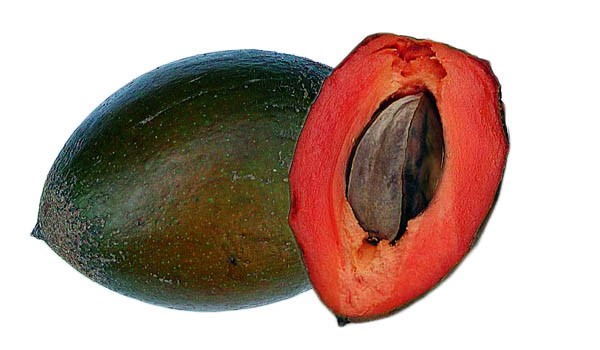- Overview
Common name: Green Sapote Botanical name: Pouteria viridis Family: Sapotaceae Origin: Guatemala, Central America Avg. Height: 20' X 20' Season: spring and summer Damage temp: 25-27 F Green Sapote Tree Grafted in a 3 gallon container. This tree is popular in South and Central America. The green sapote is very closely related to the mamey. The fruit have a smooth, leathery, green skin that has a slightly reddish hue when ripe. The pulp is creamy and moist and they are typically single seeded. The flavor can be compared to a creamy pumpkin pie, and they are most often eaten fresh or in a milkshake.
Origin and Distribution
Cultivation
UsesThe green sapote is very closely related to the mamey. The fruit have a smooth, leathery, green skin that has a slightly reddish hue when ripe. The pulp is creamy and moist and they are typically single seeded. The flavor can be compared to a creamy pumpkin pie, and they are most often eaten fresh or in a milkshake.
Origin and Distribution
Native to Honduras, Guatemala and Costa Rica.
Cultivation
Plant Cultivation Medium to large-sized tree from 40-80ft. There is not a lot of culture information for the green sapote. It tends to be a bit hardier than the mamey sapote, and has been grown in California. Fruits take up to 9-10 months to ripen. Propagation: Usually by seed, but grafts can be made onto mamey sapote rootstock.
Uses
Usually eaten fresh out of hand, but the pulp is also used in making desserts and preserves. The pulp is softer than the mamey sapote. The seeds are edible and are often roasted. - Features
weight: 9.99 lbs : - ReviewsThere is no reviews yet...Be the first!
Be the first to write a review of this product!



